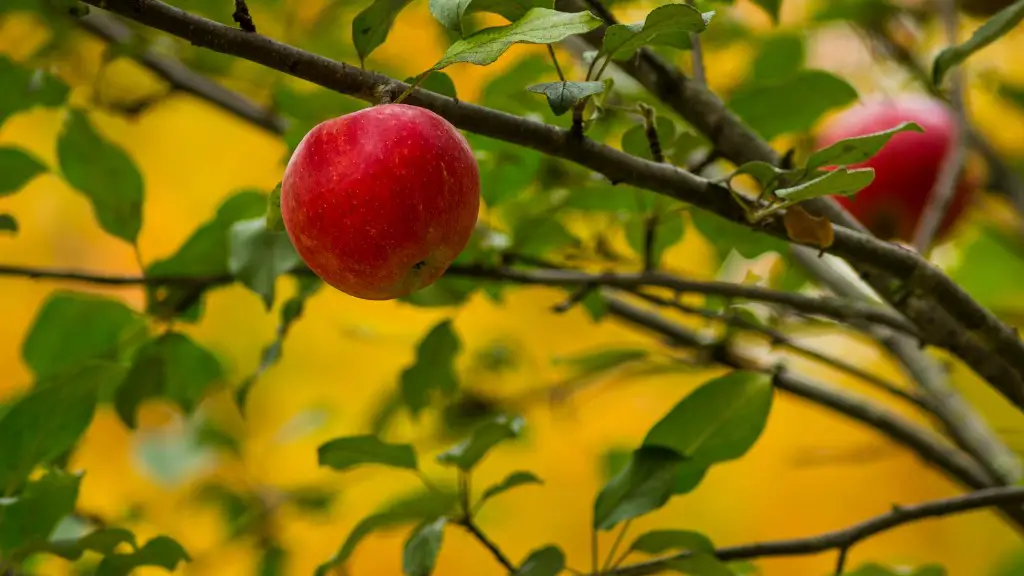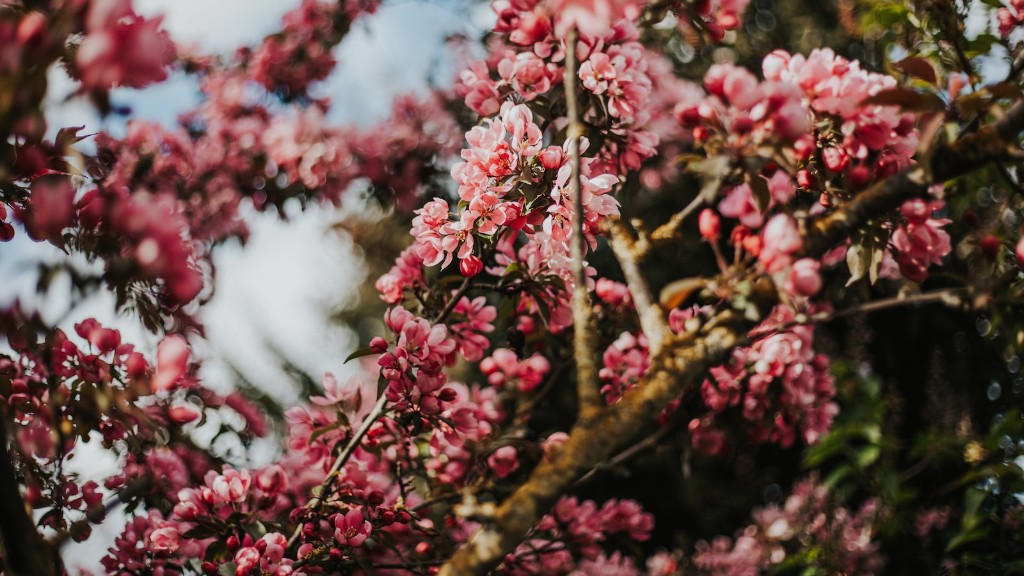The Granny Smith apple tree is an indispensable part of any orchard. Its tart and sweet fruits each season contribute to healthy diets and add a unique and delicious dimension to pies, jams and many other recipes. Knowing how to properly prune the tree can help you ensure its health and maintain the amount and quality of its produce. Here is how to prune a Granny Smith apple tree.
Removal of Diseased and Dead Branches
The first step in proper pruning of a Granny Smith apple tree is to remove any diseased and dead branches. Diseased branches should be cut 6-10 inches below the affected area. If the infection is too extensive, it is best to cut the entire branch. Dead branches should be cut as close as possible to the healthy part of the branch. Do not let dead wood accumulate; it can lead to severe infestations.
Remove Crowded, Crossed, or Rubbing Branches
When pruning a Granny Smith apple tree, it is important to remove crowded, crossed and rubbing branches. This includes any branches that cross or rub against each other. If a branch is severely crowded, it should be cut back to encourage the growth of more fruitful side shoots. Rubbing branches should be cut back to the same level.
Thinning the Canopy
Thinning the canopy should be done moderately and only when necessary. For the Granny Smith apple tree, a good rule of thumb is to only remove 1/3 of the canopy at a time. Unhealthy branches should be the first to go and pruning should be done continuously so that the canopy is never too dense. This will ensure a healthy tree with plenty of air circulation.
Removal of Suckers
Suckers are small shoots that grow from the base of the tree and compete for nutrients with the fruit. If left unchecked, they can use up the soil’s nutrient supply and stunt the growth of the tree’s fruit. Suckers should be removed as soon as they appear. Simply pinch them off with your fingers or use a pair of pruning shears.
Cutting Back Branches
Cutting back branches can help promote new growth, shape the canopy and open the tree up to more light and air circulation. When cutting back branches, be sure to make clean, angled cuts just outside the branch collar. Remove only a few inches of length at a time and do not cut too deeply. Too much pruning can encourage weak, spindly growth and stunt desired fruit production.
Time of Pruning
It is best to prune a Granny Smith apple tree in the late winter or early spring when the tree is dormant. Spring pruning is ideal, as it allows the tree more time to heal and regrow before the following season’s harvest. Pruning in the late summer or fall can lead to disease and infections.
Tools Needed to Prune a Granny Smith Apple Tree
When pruning a Granny Smith apple tree, you will need a few basic pieces of equipment. A long-handled pruning saw and a pair of sharp pruning shears are essential. Gloves, goggles, a ladder and a sturdy pair of work boots can also be helpful for safety.
Removing Water Sprouts and Misshaped Branches
Water sprouts are thin, weak and vertical branches that grow quickly and sap nutrients from the fruit-producing branches of the tree. They should be removed as soon as they appear. Unevenly spaced, misshaped or too-long branches should also be cut back to improve the overall shape and health of the tree.
Considerations When Pruning a Granny Smith Apple Tree
Before pruning a Granny Smith apple tree, consider the number and state of the branches. It should have around five rows of scaffold branches to ensure the tree’s ability to produce fruit. If the tree has too many branches, they should be thinned out while making sure not to damage the existing branches. Finally, always make sure to sanitation prune around any wounds or dead areas of the tree to ensure proper healing and to prevent any infection.
Care After Pruning a Granny Smith Apple Tree
After pruning a Granny Smith apple tree, it is important to care for the pruning wounds. Applying an anti-fungal sealant or whitewash to the wound will help protect against tree diseases. Additionally, excessive trimming should be avoided. If too much pruning is done, the tree may become weakened and less able to support the weight of crops.
Regular Pruning of Granny Smith Apple Tree
Regular pruning of a Granny Smith apple tree is important. This should be done annually in the winter and early spring. Remove diseased, dead and crowded branches, as well as any water sprouts and misshaped shoots. Consider the overall shape of the tree and how much fruit it can naturally produce. Finally, use an anti-fungal sealant or whitewash to protect the pruning wounds.
Pruning During Blooming
For flowering varieties of the Granny Smith apple tree, it is best to prune during the blooming period. This will avoid any damage to buds and reduce the risk of bud drop or blossom blight. During blooming, remove any small or misshapen buds to encourage larger and more abundant fruit production.
Pruning During Fruit-Bearing
Carrying out pruning of a Granny Smith apple tree during the fruit-bearing period should be avoided. When pruning during this time, make sure to only remove any excess shoots and water sprouts if needed. If a branch is damaged beyond repair, it should be removed immediately. Remember to use an anti-fungal sealant or whitewash on the pruned wound.



